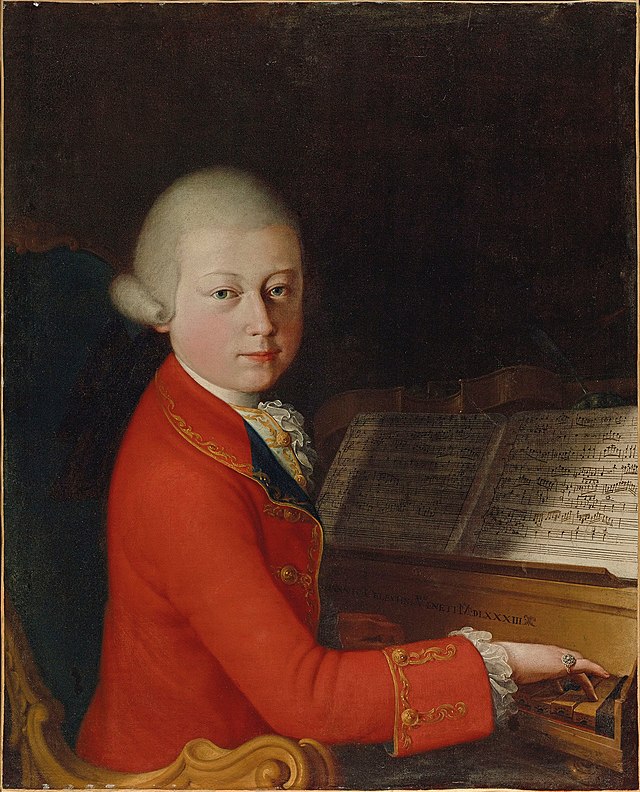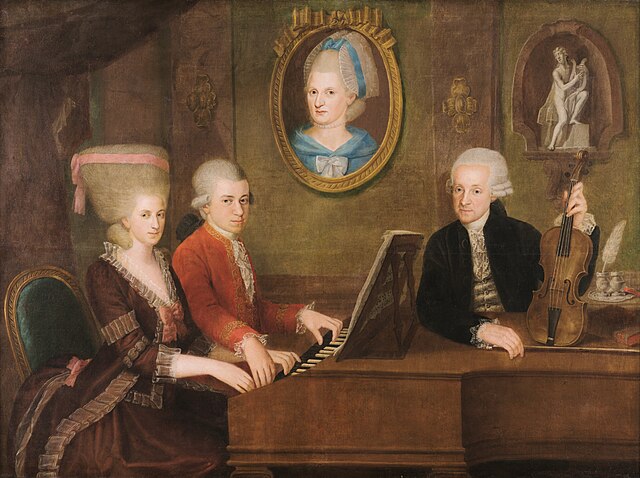Mozart Stole the Vatican’s Secret Song: A Scandal in Sacred Notes
Imagine sneaking into one of the most secretive places in the world, hearing music that no one outside its walls was ever supposed to hear, then going home and writing it all down from memory. That’s exactly what teenage Mozart did. And it scandalized the Catholic Church.
The Forbidden Song Nobody Was Allowed to Copy
Let’s start with the setting. The Sistine Chapel. Not the one you toured on your last Roman vacation, craning your neck at Michelangelo’s ceiling while whispering to your friends. In the 1700s, the Sistine Chapel wasn’t a museum. It was sacred. Exclusive. And one piece of music it guarded like a dragon hoarding gold was Miserere mei, Deus.
The piece was composed by Gregorio Allegri in the 1630s, and it was… ethereal. A hauntingly beautiful choral work sung only during Holy Week. Only inside the Sistine Chapel. Only by the Pope’s personal choir. No copies were allowed to leave the Vatican. Transcribing it was forbidden. The punishment? Theoretically, excommunication.
So of course, someone was going to steal it.

Enter the Prodigy with a Memory Like a Tape Recorder
In 1770, a 14-year-old Wolfgang Amadeus Mozart visited Rome with his father, Leopold. They managed to get invited to the Holy Week service, which meant one thing: they were about to hear the forbidden Miserere.
Now, here’s where it gets almost unbelievable. After hearing the performance once, Mozart went back to their lodgings and wrote down the entire thing from memory. Not just the basic melody. The whole nine-part choral arrangement. Perfectly.
They returned to the chapel again that week, just to check his transcription. Mozart made a few tweaks. Then he was done.
He had, effectively, pirated the Vatican’s crown jewel of music.
Was It Theft? Or Genius?
You could argue it was theft. After all, the Vatican had gone to extreme lengths to keep the piece exclusive. But no one broke in. No one took photos. Mozart just listened. Then remembered.
That kind of musical memory is rare. Most composers need sketchbooks, instruments, repetition. Mozart, though, was wired differently. Hearing something once was often enough. And what teenager wouldn’t want to show off?
Soon, copies of the Miserere started to circulate. People were stunned. How did this happen? Where had it come from?
Then the truth surfaced.
The Vatican Reacts… Surprisingly Nicely
You’d expect fury, right? Papal smoke signals. Angry letters. Lightning bolts.
But when Pope Clement XIV found out what Mozart had done, he didn’t excommunicate him. He invited him back to the Vatican.
Why? Because even the Pope could see what this was: a miracle of musical memory. Instead of punishing him, the Pope honored Mozart with the Chivalric Order of the Golden Spur.
Turns out, the Church admired genius almost as much as it valued tradition.
The Piece Itself: Was It Worth the Hype?
If you listen to Miserere mei, Deus today, you might wonder why it was ever such a big deal. It’s beautiful, yes. Soaring, gentle, deeply spiritual. But we’re used to hearing incredible choral music everywhere now, from movie scores to Spotify playlists.
Back then, though, it was otherworldly. The Miserere used techniques that were emotionally wrenching for the time: suspensions, unexpected harmonies, echoing parts. One particular ornamented high C part sung by a solo treble would send chills down spines. It was sacred not just in content but in effect. The Vatican wasn’t just hoarding music. They were guarding an experience.
Mozart, Memory, and Myth
Did Mozart actually write down the entire piece from memory? That part gets debated. Some say he might’ve seen a copy before, or had help. Others believe he was just that good.
Either way, the event became legend. It was one of the earliest signs that Mozart wasn’t just a talented kid. He was something else entirely.
And it wasn’t the last time he bent rules. Mozart would go on to push boundaries in opera, symphonies, and religious music. He didn’t always play nicely with authority. Maybe that night in Rome planted the seed.
Why This Still Matters
In a world of instant access, it’s hard to imagine a song being “forbidden.” But this story reminds us that art has always been tangled up with power. Who gets to hear it? Who controls it? Who dares to defy?
Mozart’s act wasn’t just a parlor trick. It was a quiet rebellion. And it gave the world a masterpiece that might have remained hidden for decades more.
It also reminds us that sometimes, the most beautiful things don’t belong behind walls.
Source:
1. Classic FM on Mozart and Miserere
2. The Guardian – Mozart and the Secret Song
3. Smithsonian Magazine – Vatican Music Secrets

